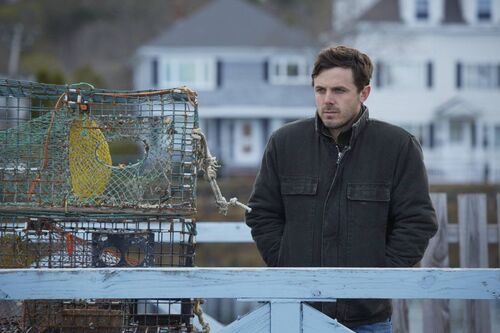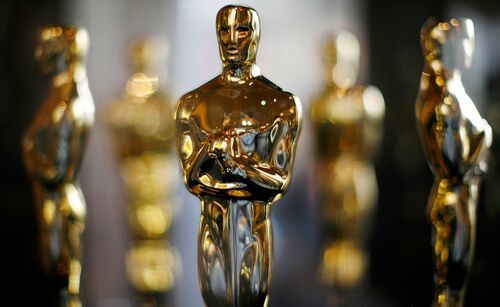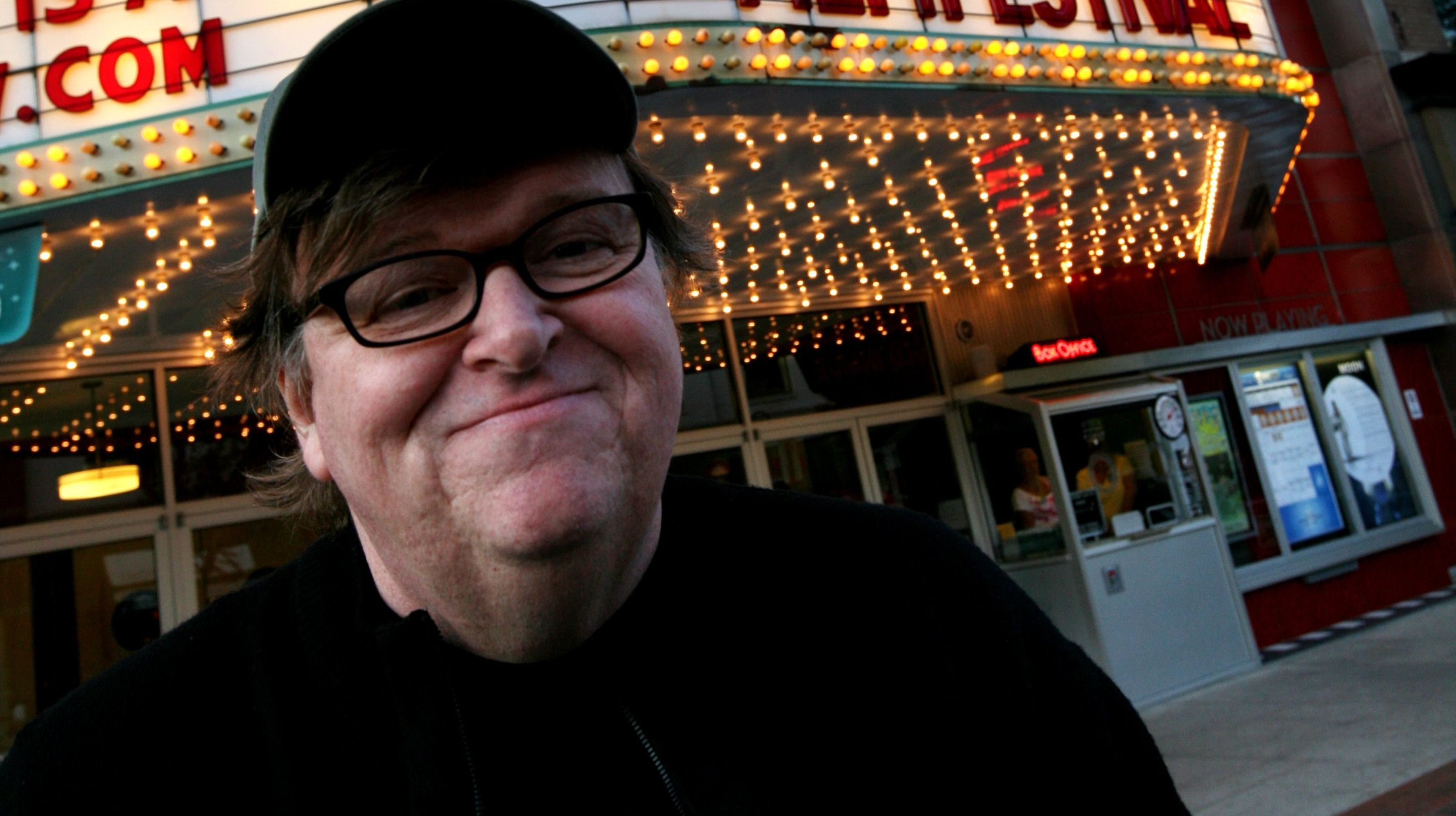
Retrospective on the career of controversial documentarian, Michael Moore
 Twenty-five years ago, Michael Moore burst onto the documentary scene with his debut film Roger & Me, which premiered at the 1989 Toronto Film Festival. Since then, he has become an esteemed Oscar winning filmmaker, New York best-selling author and political activist.
Twenty-five years ago, Michael Moore burst onto the documentary scene with his debut film Roger & Me, which premiered at the 1989 Toronto Film Festival. Since then, he has become an esteemed Oscar winning filmmaker, New York best-selling author and political activist.
Moore's films have never shied away from examining strong subjects such as gun control, terrorism, health care and capitalism. His documentaries use political satire to navigate through the narrative yet always steer close to true understanding. This method has lead Moore to become one of the world's most recognisable documentarians.
His first feature length documentary, Roger & Me, looked at the negative and economic impact the closing of several General Motors factories in Moore's home city of Flint, Michigan. At the time of making, 30,000 people lost their jobs— since then— the total has risen to 80,000. During the film, Moore is determined to track down General Motors CEO Roger Smith to ask him his reasons behind the sudden closure of the highly productive and successful factories.
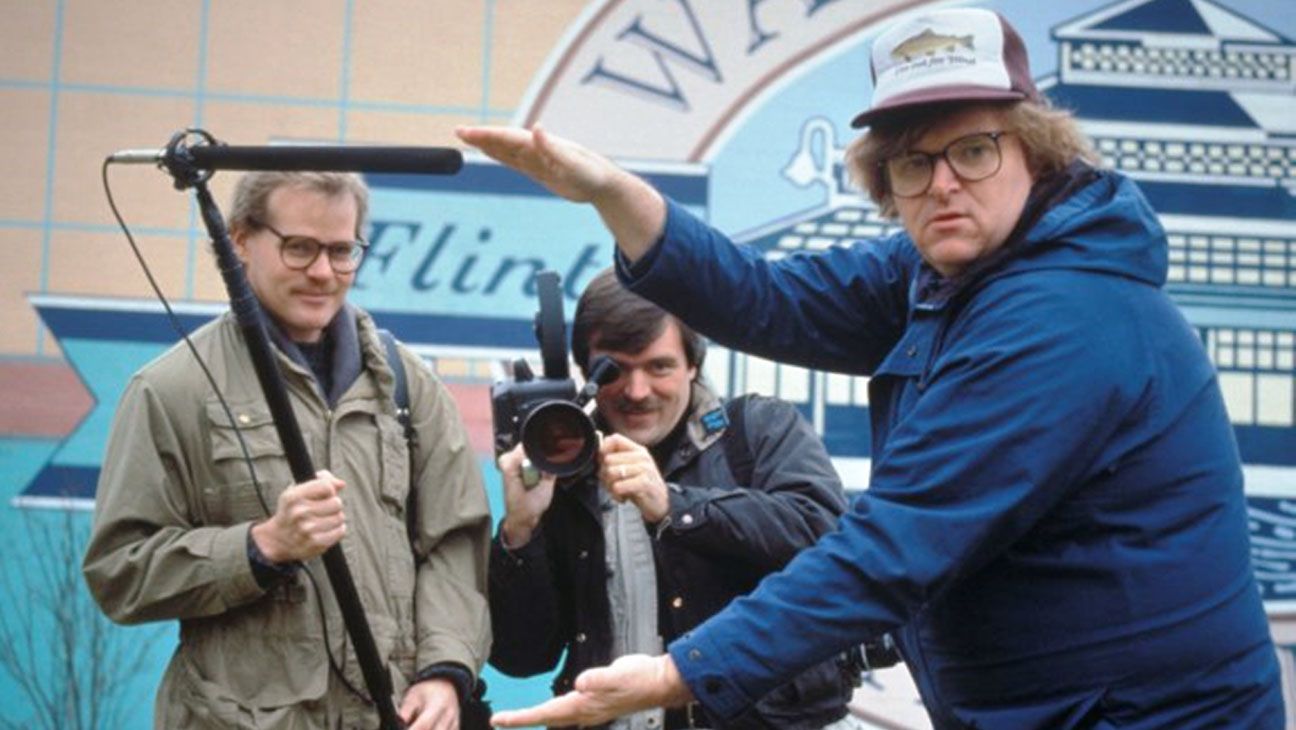
CULTURALLY AND HISTORICALLY SIGNIFICANT
Roger & Me is a culturally and historically significant movie, although it did receive some negative reviews from critics. Some cited Moore exaggerated the social impact of GM's decision to close its plants and some critics had problems with Moore's decision to depict some of the events out of chronological order. This didn't hold much weight with other critics, such as Roger Ebert, who defended Moore's decision to manipulate the films timeline of events as a 'artistic and stylistic choice that has less to do with his credibility as a filmmaker and more to do with the flexibility of film as a medium to express a viewpoint that satirists have used.'
Bowling for Columbine was Moore's second major feature length release. It explores the reasons that may have led to the Columbine High School massacre in 1999, which could've stemmed from the United States stance on acts of violence with guns. Moore intertwines a historical lesson on the United States' nature of violence with guns with common public opinions and assumptions about related crimes.
A SENSE OF URGENCY TO EXPOSE
Bowling for Columbine has a sense of urgency to expose why the United States has such a horrible past with gun crime. How Moore achieves this is through his own sense of humour that not only helps lift the heir of gloom, but deliver us facts that are snappy and get straight to the point.
Bowling for Columbine uses montages as a method of getting its objectives across, most notable is the 'What a Wonderful World' montage that focusses on American foreign policy decisions, proving that the United States have a chequered history of being the aggressor. This sequence plays out after Moore interviews Evan McCollum, the Director of Communications at a Lockhead Martin plant (one of the biggest manufacturers of missiles in the world), who states that they 'build missiles to defend us from somebody who have been aggressors against us.'
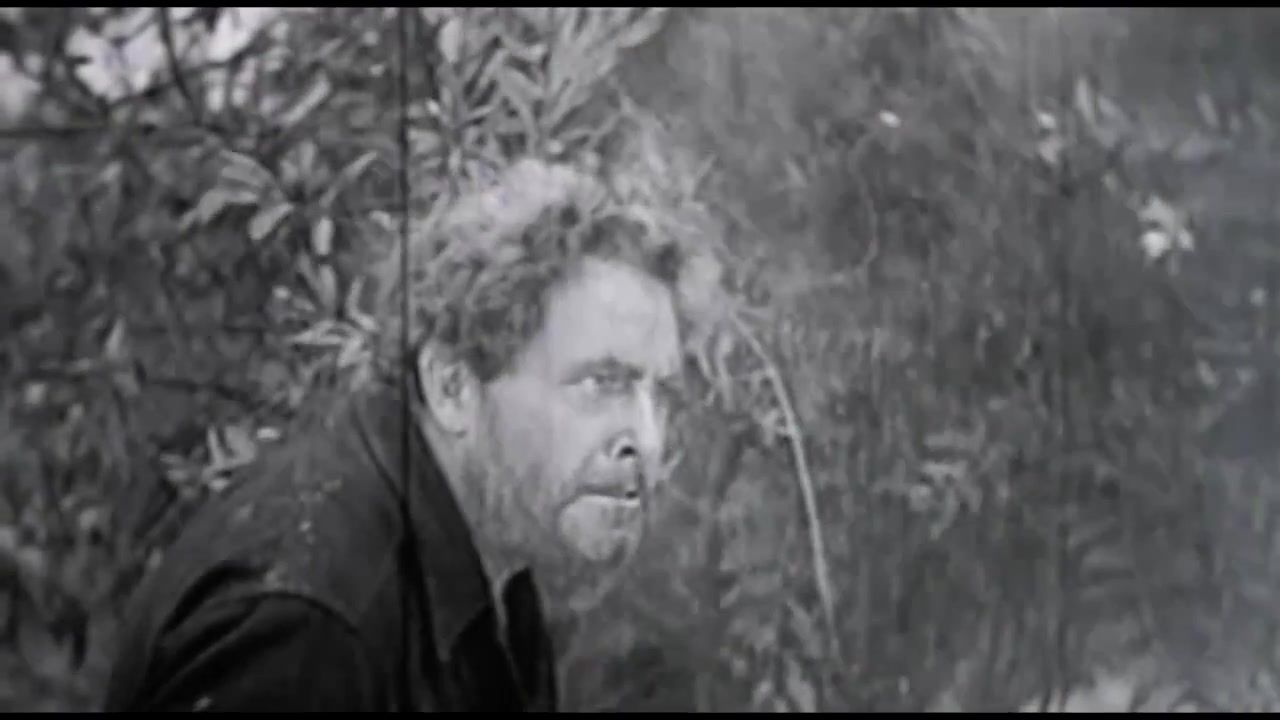
The final scene of Bowling for Columbine is one of the most memorable from all of Moore's films. He interviews— then chairman of the NRA (National Rifle Association)— actor Charlton Heston about his views on American firearms violence. Heston stumbles through his answers, seemingly never sounding sure of his convictions. It isn't until Moore asks Heston to apologise for leading a NRA rally in Flint, Michigan so soon after a 6 year old girl was shot dead at Buell Elementary School in Flint. It's at this time that Heston walks out of the interview. Moore was criticised for his interviewing techniques, being accused of ambushing the actor. These claims are way of the mark. Moore asks perfectly constructive and accurate questions regarding the subject, giving Heston plenty of space to answer in whatever fashion he feels comfortable with.
Critical reception of Bowling for Columbine was overwhelmingly positive from most critics, but as to be expected Moore also faced his fair share of negativity about the tendentious grandstanding and outright demagoguery of the film. This is to be expected from any documentary that focuses on political and social issues such as gun crime. Bowling for Coulmbine isn't just an important film within Moore's filmography, it's an important document on how the media, corporations and politicians have scared people. If guns made people safer, America would be the safest country in the world, right?
HIGHEST GROSSING DOC OF ALL-TIME
Moore followed Bowling for Columbine with Fahrenheit 9/11 in 2004, arguably his most anticipated film to date. The world was still very much on tenterhooks in relation to the September 11th attacks and the subsequent invasion of Iraq— making Moore's film a must see.
Fahrenheit 9/11 explores many avenues that branch off from the political issues regarding terrorism and the Iraqi war. Moore mindfully provides an insight into the Bush administration, pondering their alleged links with Osama bin Laden. It's a concise and adroitly executed film that undoubtedly splits opinions. Many criticised Moore's morality and sincerity, asking whether he in verity hated America. Whatever your viewpoint may be, it's hard to deny Fahrenheit 9/11's importance on society during such an autocratic time.
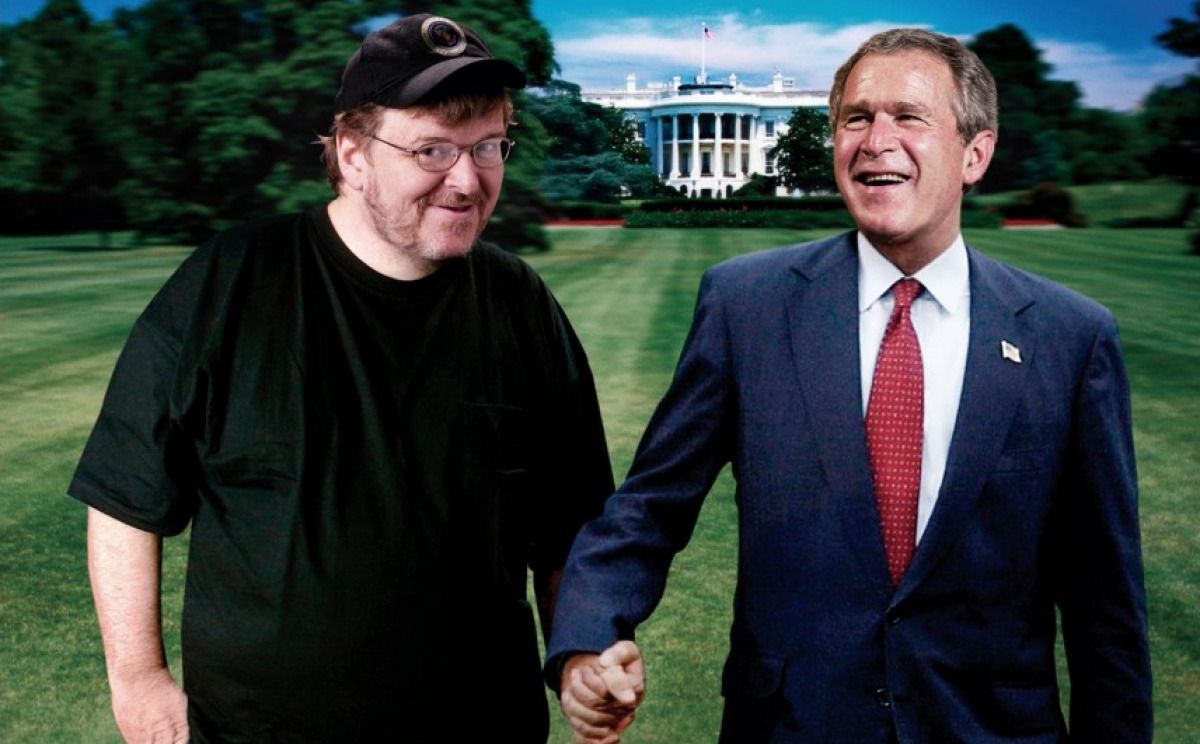
Fahrenheit 9/11 won the Palme d'Or at the 2004 Cannes Film Festival, the first documentary to do so since 1956. Instead of submitting the movie into the documentary category at the 2005 Academy Awards, Moore decided to enter the movie into the Best Picture race instead. His motive behind this decision was to have the film aired on television during the build up to the 2004 Presidential election. According to Academy rules, they forbid the airing of a documentary on television within nine months of its theatrical release, and since the Presidential election was fewer than nine months after the film's release, it would have been disqualified for the documentary Oscar. Unfortunately, Fahrenheit 9/11 didn't succeed in its quest for a Best Picture nomination but it did however, become the highest grossing documentary of all time. It amassed a total of $200million worldwide, with the United States box office taking $120million of that total alone.
After tackling gun control and political issues regarding terrorism, Moore turned his attention to another delicate situation in his homeland; health care. Sicko focussed particularly on the managed-care and pharmaceutical industries, in particular Pfizer, Eli Lilly, AstraZeneca and GlaxoSmithKline. All of those companies refused to allow any of their employees to grant Moore permission for an interview.
SICKO, JUST AS AFFECTING AS COLUMBINE
Sicko premiered at the 2007 Cannes Film Festival and received a lengthy standing ovation after its screening, but was subject to a distinct amount of controversy after its released in the United States. Towards the movies conclusion, Moore gathers together a small group of September 11th rescue workers who are chronically ill from the effects of helping the clear-up operation at ground zero. Moore takes these people to neighbouring Cuba to get free health care, something they have been neglected in the US. The United States government, upon hearing about this, investigated Moore as to whether he violated the trade embargo.
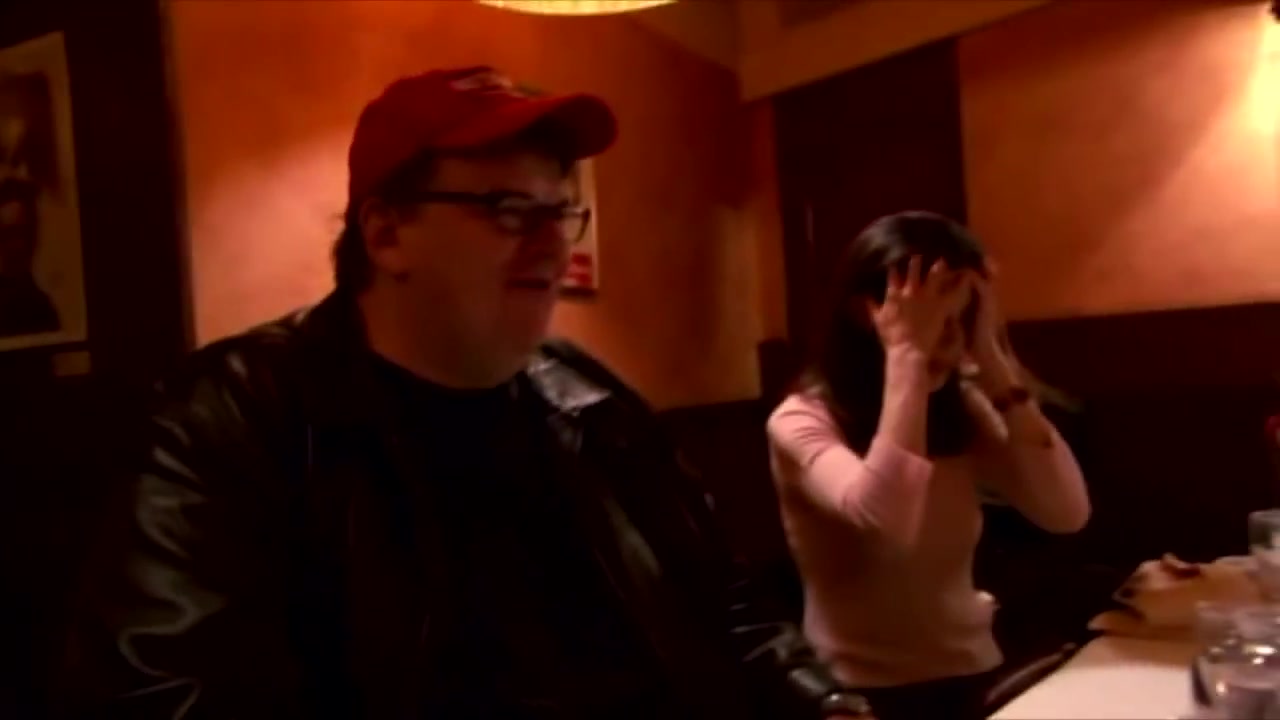
Sicko was once again a huge box-office hit for Moore and received an Academy Award nomination for Best Documentary Feature in 2008. Sicko is just as affecting as Bowling for Columbine and just as jaw dropping as Fahrenheit 9/11. Moore allows his interviewees to describe to us— in their own articulate ways— their health care horror stories. He criticises, rightfully, the Democrats and Republicans for their inertia and willingness to be bribed by pharmaceuticals. Sicko is once again a fine example of how Moore's foresight as a filmmaker brings us true life stories, and delivers them in such harrowing light.
Reacting quickly to the late-2000's financial crisis, Moore released Capitalism: A Love Story in 2009. The documentary focuses on the US economy during the transition between the outgoing Bush Administration and the incoming Obama Administration.
POWERFUL DOSE OF REALITY
Capitalism: A Love Story is a little less polished than previous efforts, but that may have much to do with the subject being far more abstract and broad in scope. Moore still manages to pack a powerful dose of reality, sprinkled with his infectious humour. He breaks down the complexity of financial mathematics into manageable bite size pieces that helps us digest it. Capitalism: A Love Story still has strong views, giving the viewer a lot to debate about and undeniably shows Moore at his most effective when face to face with Wall Street.
Along with his documentaries, Moore is a bestselling author of such titles as 'Stupid White Men,' which sold more than 3 million copies worldwide and 2003's 'Dude, Where's My Country?' which topped the New York Times best-seller list.
Regardless of your thoughts on Michael Moore, he is a filmmaker of huge intelligence and integrity. There aren't many documentarians who can evoke outbursts from his audiences whilst at the same time, challenging politicians on subjects most tend to ignore. At times he can be guilty of having double standards, but in the space of twenty-five years, Michael Moore has left his indelible mark on film history.
